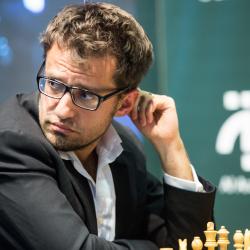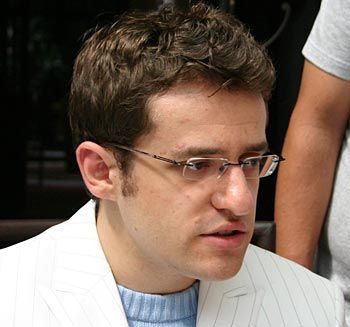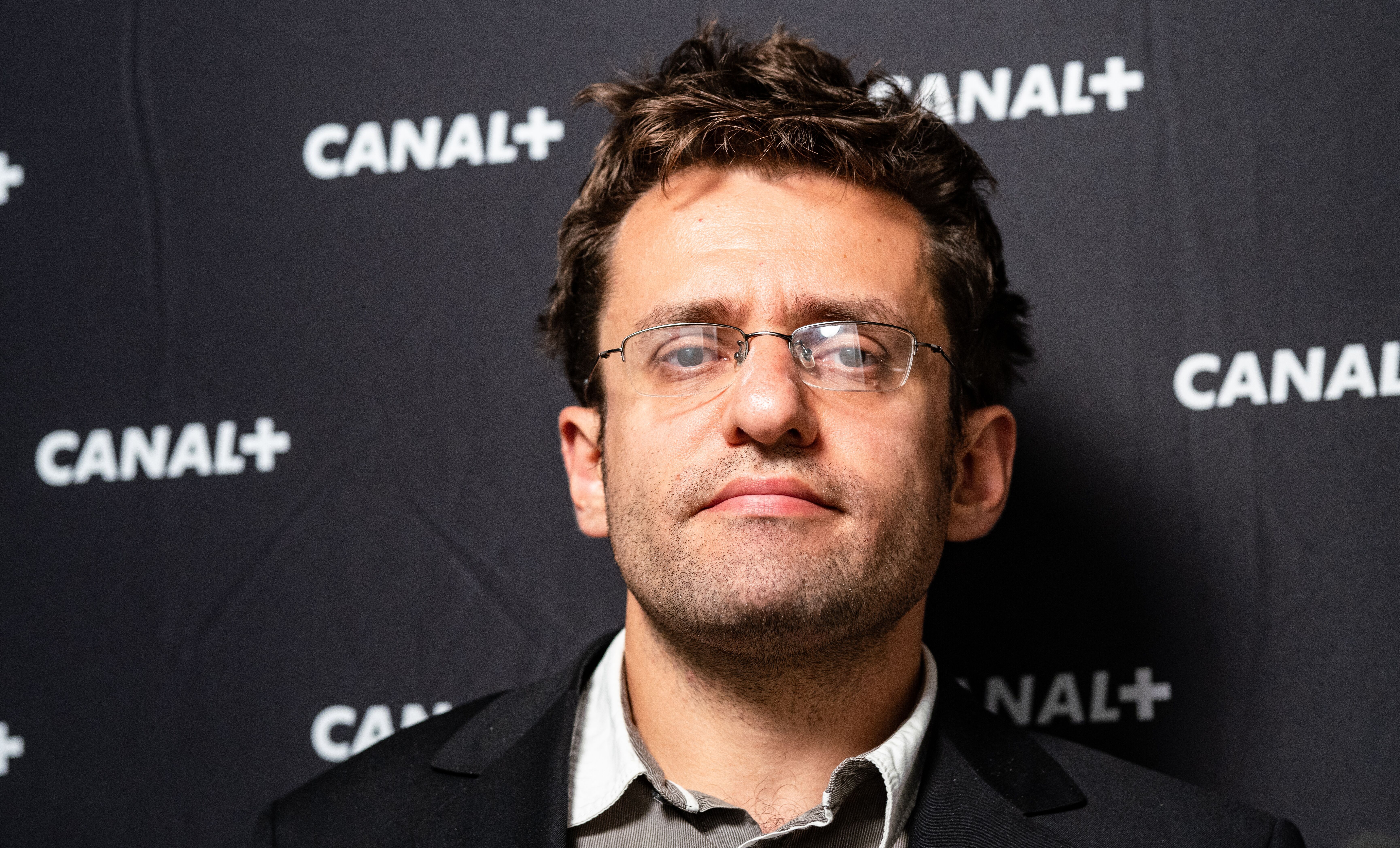GM Levon Aronian

Bio
Levon Aronian is an Armenian-American super grandmaster who has long been among the world’s best players. He first entered the top 20 in 2005 and still hasn’t lost that distinction. Most of those 15 years or so have been spent in the top 10. In 2021, he switched federations from Armenia to the U.S.
Aronian has been a model for steady, elite-level chess play in recent years, but don’t let his consistency overshadow what he has accomplished so far. In the first half of the 2010s—November 2010 to September 2014—he was in the top three. In March 2014, his rating peaked at 2830. That made Aronian the fourth-highest rated player in history—only Magnus Carlsen, Garry Kasparov and Fabiano Caruana have achieved higher ratings.
Aronian’s resume also includes world championships in Fischer random chess, blitz and rapid; multiple gold team medals for the Armenian national team; an individual Armenian national title; two Chess World Cup victories and much more.
- Early Chess Career (1991 To 2001)
- National Champion And Rising Grandmaster (2002 To 2008)
- World Rapid & Blitz Champion (2009 To 2013)
- Fourth-highest Rated Player In History (2014 To 2019)
- Present And Future
- Switching Federations
Early Chess Career (1991 To 2001)
Aronian learned how to play chess when he nine years old. His sister taught him the basics, and with early coaching from GM Melikset Khachiyan, Aronian quickly became a strong chess player.
Aronian won the World Under-12 Championship in 1994 with 8/9 points. His performance put him in front of several future top-10 players in the world, including Ruslan Ponomariov, Alexander Grischuk and Etienne Bacrot, as well as future five-time Spanish Chess Champion GM Francisco Vallejo Pons. Later in 2000, Aronian became a grandmaster. Then he placed second in the 2001 World Junior Championship with 9.5/13 points. He also placed second in the Armenian Chess Championship that year.
National Champion And Rising Grandmaster (2002 To 2008)
One year after narrowly missing first place at the World Junior Championship and the Armenian Chess Championship, Aronian won both titles.
He took first place at the 2002 World Junior Championship ahead of future grandmasters such as Bu Xiangzhi, Pentala Harikrishna and Luke McShane. He also took the 2002 Armenian Chess Championship, granting the 20-year-old grandmaster two prestigious tournament victories in the same year.
Over the next few years, Aronian put together several notable performances. From 2003 to 2005, he strung together three top-four finishes in the annual European Individual Chess Championships. In 2004 he defeated Carlsen in the first round of the FIDE World Chess Championship before losing in the third round. In 2005 Aronian won the Karabakh International Tournament. His 6/9 points put him ahead of eight-time Armenian Chess Champion Ashot Anastasian (who finished second) as well as notable players such as Hikaru Nakamura and Vassily Ivanchuck.
A tournament at the end of the year may have represented his biggest accomplishment to date. Then Aronian won the Chess World Cup 2005 without losing a single game. He defeated Vallejo, Mikhail Gurevich, Bacrot and Ponomariov in the latter part of the 128-player tournament. The top-10 finishers qualified for the 2007 Candidates’ Tournament, which began with two rounds of matches before the World Chess Championship 2007. Aronian beat Carlsen in the first round and beat Alexei Shirov in the second round to qualify for the world championship tournament, where he placed seventh out of eight players.
The next year, 2006, Aronian won the elite Linares International Chess Tournament. His 8.5/13 points was half a point ahead of Teimour Radjabov and the then FIDE World Chess Champion, Veselin Topalov. Aronian finished the tournament with a performance rating of 2808. He tied for first place with Peter Leko and Ponomariov at the inaugural Tal Memorial in 2006. At the 37th Chess Olympiad in the same year, Aronian led Armenia to its first-ever gold medal at the event.

Aronian took part in the Finet Chess 960 (or Fischer random chess) open tournaments during this period. After winning in 2003, he earned a match against then-world champion Peter Svidler but lost. Aronian won the open tournament again in 2005, earning a rematch with Svidler. This time Aronian won, earning the Chess960 World Champion title. (In 2005, Aronian was named the best sportsman in Armenia.) He defended the title in 2007 against Viswanathan Anand and lost it in 2009 to Nakamura.
In 2007 Aronian shared first place with Topalov and Radjabov at the prestigious Corus tournament in Wijk aan Zee (now Tata Steel). He repeated in 2008 when he shared the victory with Carlsen. Among Aronian's tournament wins, a notable performance came at the 38th Chess Olympiad in 2008 when Armenia defended its title and captured a second consecutive gold medal, led once again by Aronian.
World Rapid & Blitz Champion (2009 To 2013)
In April 2009 Aronian won the fourth tournament of the 2008-2010 FIDE Grand Prix held in Nalchik, the capital city of the Kabardino-Balkar Republic, Russia. He finished with 8.5/13 points, a full point ahead of Peter Leko and Vladimir Akopian and an average field rated 2725. The win helped him in the standings of the Grand Prix, which he won with one tournament to go—that qualified him for the Candidates’ Tournament of the World Chess Championship 2012. Despite being a favorite in the Candidates’ Tournament, he lost to Grischuk in first-round tiebreakers.
Aronian won the World Rapid Chess Championship in August 2009 after defeating Ian Nepomniachtchi 3-1 in the finals of the double-round robin tournament. After taking the rapid world title, Aronian was awarded the title of “Honoured Master of Sport of the Republic of Armenia” in December 2009.
The next year, he took another world championship. This time it came in blitz chess, as he took the 2010 World Blitz Championship ahead of Radjabov and defending champion Carlsen. Aronian’s 24.5/38 points clinched the world title with a round to go.
Aronian’s next big wins came in 2012. At the prominent Tata Steel Chess Tournament in Wijk aan Zee, he won with 9/13 points, one point ahead of Carlsen, Radjabov and Caruana. Aronian finished with a tournament performance rating of 2892. Later in August and September 2012, he once again led Armenia to the gold medal at the 40th Chess Olympiad. Aronian had the best performance rating (2849) of all players on board one.
After finishing second to Carlsen in the 2013 Tata Steel Chess Tournament, Aronian had two notable wins to round out this period of his career. A favorite at the 2013 Alekhine Memorial in late April, he edged out Boris Gelfand on tiebreakers to take that tournament. In October, Aronian participated in the Grand Slam Chess Masters, a double round-robin event that also featured Michael Adams, Shakhyirar Mamedyarov and Maxime Vachier-Lagrave. Aronian went undefeated, finishing a full point ahead of Adams for the win.
Fourth-highest Rated Player In History (2014 To 2019)
Aronian began 2014 with another win at the Tata Steel Chess Tournament. His 8/11 points was more than enough for clear first, 1.5 points ahead of Anish Giri and Sergey Karjakin. Aronian had a tournament performance rating of 2911 when he captured his fourth title at Wijk aan Zee.
That performance combined with other strong play to enable Aronian to attain the highest rating of his career in March 2014. Reaching 2830 on the official FIDE rating list that month, he became the third-highest rated player in history. Fabiano reached 2844 later that year, in October, making Aronian the fourth-highest rated player in history. He holds that distinction today.
In late 2014 and into 2015, Aronian experienced a setback in his play. It started in October 2014 when he was no longer rated in the top three players in the world. For nearly four years—from November 2010 to September 2014—Aronian was no worse than the world’s number-three player. However, despite losing his status as one of the three highest-rated players in the world, Aronian has remained an elite chess player. As evidenced from the following highlights of his recent play, he’s always a threat to win at the highest level of chess.
Early in 2015, Aronian took part in the Russian Team Championship. He won the event while playing with team Siberia alongside Vladimir Kramnik. In September was Aronian’s biggest win of the year. With 6/9 points, he won the 2015 Sinquefield Cup a full point ahead of second-place finishers Giri, Carlsen, Vachier-Lagrave and Nakamura. The performance put Aronian back into the world’s top 10.
Although 2016 was a difficult year for Aronian, he showed a remarkable improvement in 2017. In April he won the Grenke Classic Tournament 1.5 points ahead of Carlsen and Caruana. In June he won the Norway Chess Tournament a full point ahead of Carlsen, Kramnik and Karjakin and had a tournament performance rating of 2918. In August he won the Saint Louis Rapid & Blitz with 24.5/36 points, which was three points over second-place finishers Karjakin and Nakamura. In September he won the Chess World Cup 2017—it qualified him for the Candidates’ Tournament 2018 (where he finished in last place)—and became the only player to win the World Cup twice. Finally, in November, he won individual gold on board one while playing for Armenia (team silver) at the 2017 European Team Chess Championship.
Aronian had two notable performances in 2018. In January he took the Gibraltar Chess Festival by beating Richard Rapport and Vachier-Lagrave on tiebreaks. In August he tied for first with Carlsen and Caruana in the 2018 Sinquefield Cup. After they were equal on three initial tiebreak regulations (mutual record, number of wins and number of wins as Black), the next tiebreak was a drawing of lots—complete chance. There was talk of a three-player playoff, but the trio decided to share the title.

Levon Aronian at the 2018 Candidates' Chess Tournament. Photo: Maria Emelianova/Chess.com.
Just like in 2018, Aronian had two notable performances in 2019. The first came at the Saint Louis Rapid & Blitz Tournament, where he won the event for the second consecutive year. His 22/36 points was half a point over Yu Yangyi, Ding Liren and Vachier-Lagrave. Aronian’s second major victory in 2019 came at the Superbet Rapid & Blitz tournament. He finished in a first-place tie with Karjakin, but Aronian won the playoff to take the event.
Present And Future
Aronian has already solidified his place as an all-time chess great. Prior to reaching 40 years of age, he amassed wins and titles across world championships (in Fischer random chess, blitz, and rapid), team events, Chess World Cup events and more. He’s the fourth-highest rated player in history. And for nearly four years of the first half of the 2010s, he remained one of the world’s three highest-ranked players.

Don’t forget those accomplishments as the Armenian icon and hero continues to play chess at an elite level, winning the WR Masters tournament in February 2023. His successful 2023 continued with a win at the Satty Zhuldyz Rapid & Blitz tournament in April. In 2024, he won the American Cup.
There’s no question that Aronian is a model of consistency—after all, he has been in the world’s top 20 since entering it in July 2005—but he’s capable of beating anyone at any time. Aronian is as dangerous as he is dependable, which makes him a threat at the most prestigious chess titles and tournaments.
Switching Federations
On February 26, 2021, Aronian posted a statement on social media that he would switch federations to the U.S. and relocate to St. Louis. His stated reason was disappointment with the Armenian government led by Prime Minister Nikol Pashinyan and the negative influence on the Armenian chess society. Aronian officially changed federations on December 1, 2021 and made first appearance for the U.S. team at the 2022 Olympiad in Chennai.
(Think you can play like Levon Aronian? See if you can match his moves in five of his greatest games.)


